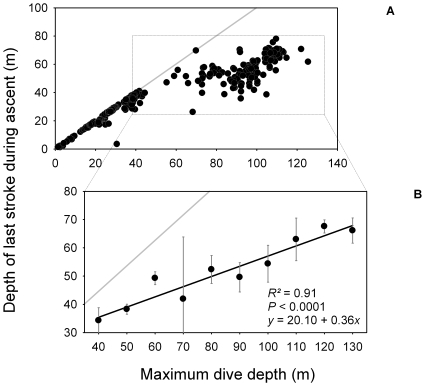Figure 7. (A) Depth of last foot stroke during ascent in relation to maximum dive depth for all birds and (B) close up for dives strictly >40 m, where depth of last foot-stroke is shallower than maximum dive depth.
Because dives are flat-bottomed, maximum dive depth is a good proxy of depth of end of bottom phase (mean difference = 0.9±1.5 m). For dives <40 m, depth of last foot-stroke during ascent is similar to maximum dive depth, birds gliding from the bottom back to the surface (grey line: y = x). For dives >40 m, the depth where the last stroke occurs increases with maximum dive depth (each point is the mean ± S.D. of individual means within each 10 m depth class); the linear regression for this relationship is the black line (grey line: y = x).

